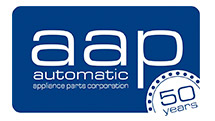Mastering Appliance DIY: Installing a Whirlpool Washer With Confidence
You Are Here: Home > Mastering Appliance DIY: Installing a Whirlpool Washer With Confidence > Mastering Appliance DIY: Installing a Whirlpool Washer With Confidence
*** Please be aware that Norridge is the only shipping facility. Inventory on-hand at all other branches is unavailable for immediate shipment. ***
Purchasing a new appliance is an exciting endeavor that can transform how you handle your daily chores. You can easily install a washing machine yourself for convenient cost savings and that sense of satisfaction you gain from a DIY job well done. We'll walk you through the basics so you can get your new washer up and running quickly.
Understanding Your Whirlpool Washer
Whirlpool washing machines have many options, with something for nearly every homeowner:
- Front-load washing machines: A front-load washer has a horizontal drum with a door on the front. This type of machine uses less water than its top-loading counterparts and provides gentle yet thorough agitation. They're available in higher-capacity designs and can sit atop a handy storage drawer or a Whirlpool dryer.
- Top-load washing machines: Top-load washing machines have a vertical agitator or impeller basket that's accessible via a door on top of the machine. Some modern designs even offer a two-in-one removable agitator. Top-load machines allow for deep water washing and adjustable water levels, which you can't get with a front-loading machine. Wash times are shorter with top-loading machines than with front-loading designs.
Many factors can influence your decision. When you're comparing Whirlpool washing machines, you should consider:
- Price: Most Whirlpool washers are between $550 and $1,600.
- Size: Carefully measure the available space for your new washer. Whirlpool has everything from closet-depth washers holding 4.3 cubic feet to top-load washers handling 5.3 cubic feet.
- Technology: To take your laundry experience to the next level, consider a smart washer you can control via a smartphone app.
Essential Tools and Safety Precautions
Fortunately, you only need a few basic tools to install a washing machine. Gather:
- Pliers or a wrench.
- A spirit level.
- A utility knife.
- A bucket.
Turn the water to the water lines off before disconnecting them for safety. Place the cardboard box from the new machine on the floor to protect it from scuffs as you work.
Step-By-Step Installation Guide: Washer Installation
1. Unpack the Washing Machine
Carefully remove your new washing machine from the box. Most washers have carriage bolts on the back or underside in each of the four corners to secure the drum during transit. Remove these carriage bolts before installation. Open the lid and remove any packaging materials from inside the washer.
2. Position the Washing Machine
Carefully move your washing machine into place. Leave at least an inch of space on all sides of the machine. Check the instructions for your specific model to determine whether you need to leave more than an inch of space around it.
3. Set Up the Drain Hose
Your washing machine will come with a drain hose attached. Feed the drain hose into a standpipe or nearby sink. If you're feeding the hose into a sink, use a hose guide to make sure it bends downward into the sink. If you have a standpipe, feed the hose into the pipe. Inspect the pipe's full length to ensure it's not kinked anywhere.
4. Connect the Water Supply Hoses
You may find your water supply hoses stored in the drum of the washing machine when you first purchase it. If your machine didn't come with hoses, you can use the existing ones from your previous installation or buy new ones. Remove these hoses and screw them onto the hot and cold water valves behind the machine using pliers or a wrench. Run clean water through the hoses and into a bucket for a few seconds to ensure there are no clogs.
The hoses may indicate that one is for hot water and the other is for cold, so examine them closely and position them as noted. Attach the other end of the hoses to the appropriate spots on the back of your new washing machine.
5. Check for Leaks
Turn on the water supply valves and inspect the water supply hoses and the drain hose for leaks before moving your washing machine into place. If you see water dripping anywhere, tighten the appropriate hose. If this doesn't resolve the issue, turn the water off and check the connector's rubber washer to ensure it's not warped. Warping may occur if you overtighten the connections. Replace the washer as needed to resolve the issue.
6. Ensure the Machine is Level
Position your washing machine in its final spot and place a spirit level on top. Check that the machine sits level from left to right and front to back. Adjust the legs on the bottom if the machine isn't sitting level. Secure the locknuts against the machine's frame to keep them in place.
7. Plug Your Machine In
The last step is to plug your new washing machine in and give it a spin.
Troubleshooting and FAQs: Common Installation Challenges
There are a few common problems to look out for.
Why Is Water Leaking?
If your washing machine leaks after installation, return to the water lines and drain hoses. Look for loose connections or worn washers and seals. Inspect the hoses as well. Washing machine hoses usually need to be replaced every five years or so. If you're using hoses from your last washer, they may be at the end of their life span.
Why Is the Washing Machine "Walking" When It Runs?
If your washing machine moves across the floor while handling your laundry, it's not level. Ensure the leg locknuts are tight, and recheck the machine's leveling. Make sure you're not overloading your washer, which can cause it to knock around.
Whirlpool Replacement Parts for Repairs
Over time, the parts from your washing machine may wear out. Automatic Appliance Parts Corporation is your go-to source for basic maintenance and repairs. You can find nearly any part with our convenient online lookup tool. We can supply the parts for almost any repair.

 Shopping Cart [empty]
Shopping Cart [empty]









